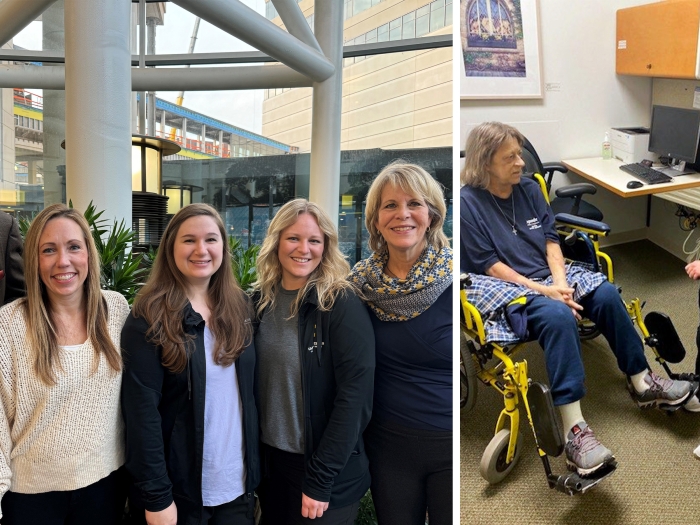Many infants need cranial remolding orthoses to assist in reshaping their heads. Research shows they have a high success rate with infants
5:00 AM
Author |

On average, about 450 infants are fit with a cranial remolding orthosis, also known as a helmet, each year at the University of Michigan Orthotics and Prosthetics Center.
These helmets help to reshape an infant’s irregular skull.
Research from the University of Michigan Orthotics and Prosthetics Center looked at the effectiveness of the Michigan Cranial Reshaping Helmet and what age it was best to prescribe them at.
Research published in the Journal of Prosthetics and Orthotics focused on the success rates of cranial helmets in 300 infants with positional plagiocephaly, a skull deformity in which the skull is asymmetric; it’s flattened on one side in the back and on the other side in the front.
Each of the infants was prescribed a helmet to help shape their skull into a symmetrical shape as they grew.
“The helmets allowed the flattened areas of the head to grow until they matched the rounded areas,” said Hannah Gensch, resident orthotist, as well as a researcher under Jennifer Richards, MA, CPO, lead author on the study.
“We measured the largest diagonal diameter of the head from the forehead to the back of the skull to determine the size of the helmet. The helmet stops the growth of the largest part of the skull and allows room for the rest of the skull to grow to that size, so the child ends up with a symmetric oval shape.”
Study results showed the chances of achieving a symmetric head shape were significantly greater when the infant’s deformity was moderate, as opposed to when it was severe, and the chances of achieving a symmetric head shape were somewhat greater when the helmet was provided at less than six months old, as opposed to older.
“Due to the malleability of infants’ skulls, prescribing a helmet before six months of age increased the chances of achieving a symmetric head shape,” said Gensch.
“If the infant had a severe deformity or was prescribed the helmet later in infancy, the chance the infant would reach a fully symmetric head shape was decreased. However, it was still common to see at least a 50% improvement in head shape.”
Gensch states that there are no medical concerns if the skull does not reach a symmetric shape.
“Helmets are mostly for cosmetic purposes,” said Gensch. “In the most severe cases, not treating an infant with an asymmetric skull with a helmet could lead to jaw issues or increased orthodontic needs in the future, but this is rare.”
If you notice an asymmetric head shape in your infant or think that a helmet might be beneficial, talk to your pediatrician to learn more.
Additional authors include Chelsea A. Richards, MPO, CO; Alyssa M. Petz, MPO, CO; Claire E. Vallery, MPO, CO; and Jennifer A. Richards, MA, CPO, from the University of Michigan Orthotics and Prosthetics Center, University of Michigan, Ann Arbor, Michigan. Matheos Yosef, PhD; and Shokoufeh H. Khalatbari, MS, from the Michigan Institute for Clinical and Health Research, University of Michigan, Ann Arbor, Michigan. Christopher J. Frank, MD, PhD, from the Department of Family Medicine as well as the Institution for Health Care Policy and Innovation at the University of Michigan, Ann Arbor, Michigan.
Paper: “Success Rates of Cranial Remolding Orthosis Treatment of Plagiocephaly based on Initial Presentation,” Journal of Prosthetics and Orthotics. DOI: 10.1097/JPO.0000000000000481

Explore a variety of health care news & stories by visiting the Health Lab home page for more articles.

Department of Communication at Michigan Medicine
Want top health & research news weekly? Sign up for Health Lab’s newsletters today!





